
Edelbrock Blown-and-Stroked LS3
Text by Steve Temple
Photos by Steve Temple, and Courtesy of Edelbrock
While GM’s stock LS3 has proven itself in wide variety of applications for various project and competition cars, the standard output of 430hp could be better—way better. What’s it take to achieve more than a 65-percent increase in power?
Two basic elements: Higher pressure and more volume. Working together, they pull 720hp and 695 lb/ft from Edelbrock’s hard-charging LS3 crate engine. The higher pressure results from the forced induction of an E-Force twin-rotor blower. And more volume comes from a stroked crank and rods.
All easier said than done, of course. So we spent some time sweating the details with the engine guys at Edelbrock to find out what it takes to whip an LS3 into a lather. After all, getting a thoroughbred to run harder and faster requires way more than just ringing a bell.
Consider the performance parts that Shaver Racing Engines installed into the LS3 block. Increasing the swept volume of the cylinder from 376 to 416 cubes begins with a Manley crankshaft boasting a 4.0-inch stroke (increased from 3.62 inches stock). It in turn pumps elongated H-Beam connecting rods and aluminum pistons through a 4.065-inch bore.
While this stroked setup is a well proven path, some background info shows just how far we’ve come in the last 16 years or so. Recall that the old 5.7L LS1 was inherently constrained by its 3.900-inch bores, so that even when honed almost to the water jacket, a 4.000-inch-stroke crank achieved only 383 inches. A larger bore required sleeving the cylinders—an expensive and not always reliable option, since coolant leaks and poor cylinder sealing can result.
In 2005, the LS2 featured siamese cylinder bores, making a 400ci displacement possible with a stroker crank. Then just two years later the 6.2L block (basically the same one found in the LS3), featured a 4.065-inch bore. Now, hone out the bores by 0.005 inches and fit in a 4.000-inch crank, and voila—the displacement goes from 376 to 416 cubic inches.
What are sort of crank does Edelbrock use? Manley’s lightweight design consists of 4240 forgings, nitrided for added strength, along with other treatments such as stress relieving, shot-peening and magnafluxing. The large, .125 radius journals are micro-polished and lightened as well. For sufficient clearance from the piston skirts, the counterweights are fully profiled, and the main bearings are gun-drilled for further weight reduction.
The aforementioned Manley H-beam rods measure 6.125 inches (versus 6.098 inches stock), with the block clearanced to prevent interference with the rod bolts. As for the forged, 2618-aluminum pistons, they have an 18cc dish, for a comparatively lower 9.5:1 CR to offset the increased airflow from the blower and ensure a smooth, knock-free burn of 91 octane pump gas. (In a normally aspirated LS3 stroker, a CR of 11.7:1 is not uncommon, delivering an output of 600 horses or more.)
The pistons features low-friction, 0.150-inch floating pins instead of pressed-fit units. In addition, Manley employs a one-fixture manufacturing process to maintain an optimum ring groove to skirt squareness. An offset wrist-pin design reduces piston slap, and a bridging ring spans the pin area. Total Seal’s package has 1.5, 1.5 and 3mm rings. Roundwire locks, tool steel wrist pins and pressure balance grooves are included with every set.
As already noted in passing, a normally aspirated stroker motor leaves some ponies on the table, which leads us right into supercharging—the source of the higher pressure mentioned at the outset. Edelbrock’s E-Force LS3 blower spins Eaton TVS 2300cc/rev four-lobe rotors with 160° of twist. They’re designed for maximum flow, minimum temperature rise and quiet operation for better drivability. An integrated bypass valve helps eliminate parasitic loss under light throttle for improved mileage potential (as if fuel efficiency is even a consideration when running blown stroker motor).
E-Force superchargers have an innovative inlet configuration with a shorter, less restrictive intake path for improved air flow, and no need for a jack-shaft. Keeping the air cool is a high-capacity, air-to-water intercooler and low temp heat exchanger.
The supercharger features a driver-side throttle body orientation for ease of intake routing in a variety of project vehicles, and a Corvette belt offset for a compact installation. The top of the supercharger measures 21.54 inches from crank centerline in its standard configuration (but a special order is available for a lower profile, Corvette C6 lid for additional two inches of hood clearance, and Edelbrock is receptive to other custom requests).
With the supplied 2.75-inch supercharger pulley, boost is approximately 12 psi. Even more pressure is possible, up to about 14psi, by adding an optional overdrive crank pulley. To keep pace with increased airflow of the blower, Edelbrock supplies 60 lb/hr injectors and custom fuel mapping with its pre-programmed ECU. But for the higher psi figure noted above, a custom tune and bigger fuel pump would be required.
Typically positive-displacement, supercharged cam profiles have wide lobe separations and minimal (or negative) overlap, hence the 121-degree LSA of the bumpstick. The hydraulic roller camshaft offers up to 215 degrees intake/247 degrees exhaust duration at 0.050 in., and .629 in. intake/.656 in. exhaust valve lift using the included 1.7:1 ratio roller rocker arms. The heads are high-flow LSA units designed for supercharged applications with a swirl feature on the intake ports that allows for more spark advance.
The Edelbrock GM LS 416 c.i.d. E-Force supercharged long-block, crate engine come comes complete with essential supercharger kit components, such as the electric intercooler water pump, intercooler plumbing and intercooler recovery tank, as well as fuel rails, 60 lb./hr. fuel injectors, a mass airflow sensor housing, and a reusable air filter. A turnkey package with all the front-drive accessories is also available to suit the particular needs of vehicle builders.
Either way, this racehorse is ready to run in a Corvette or other projects cars. Just spank the flanks and you’re off!

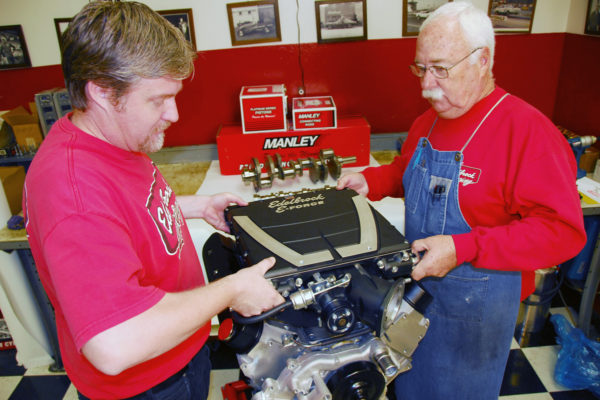
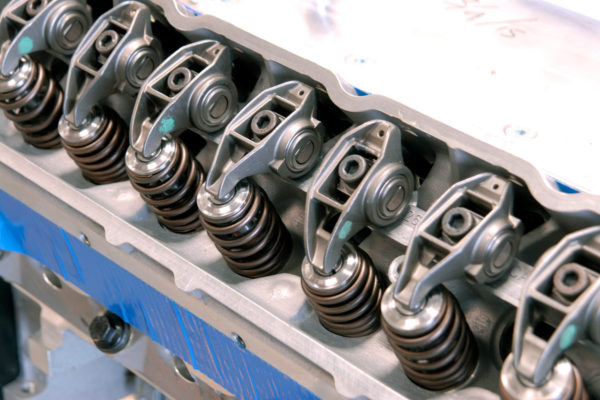
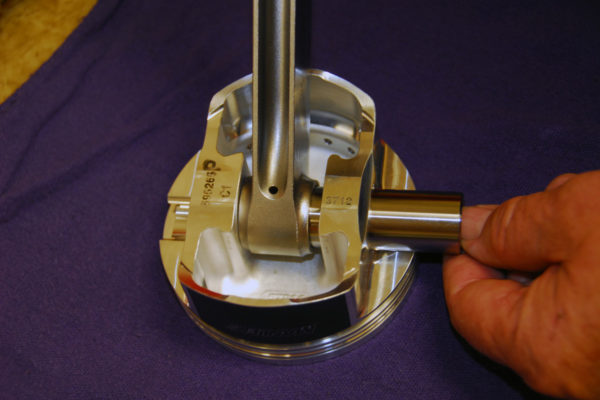
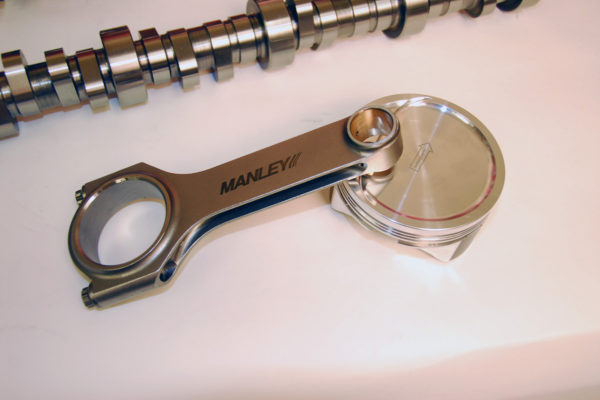
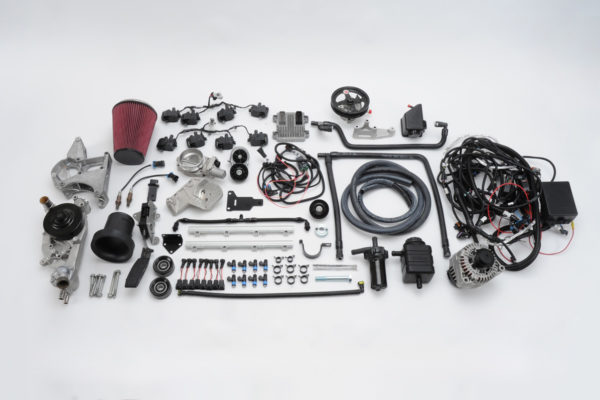
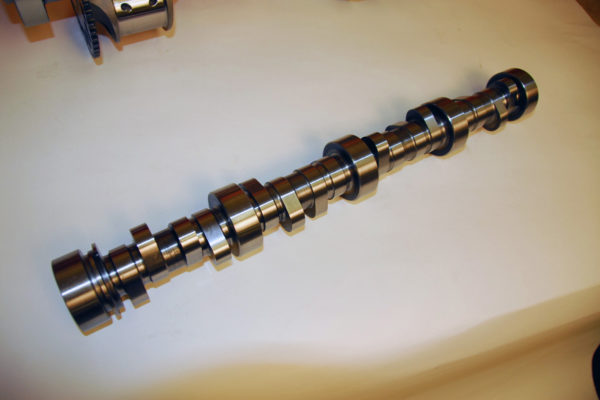
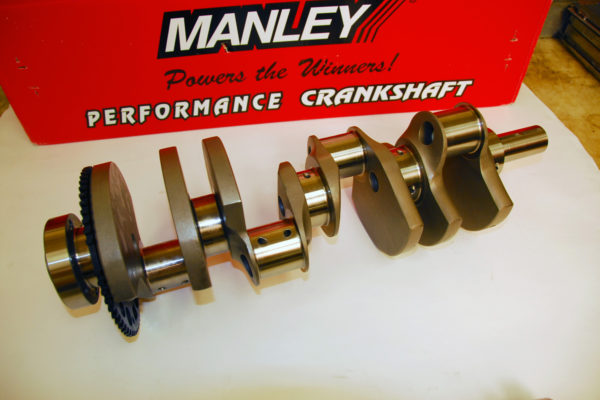
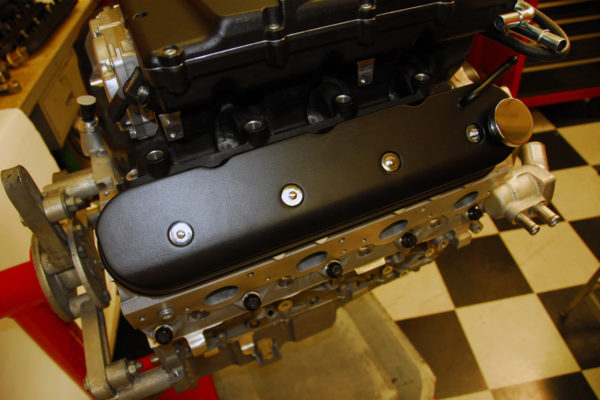
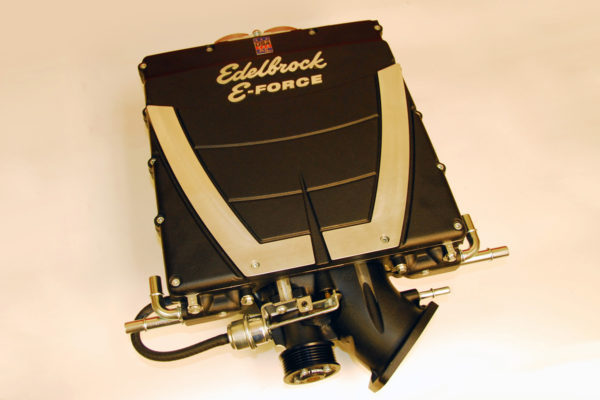
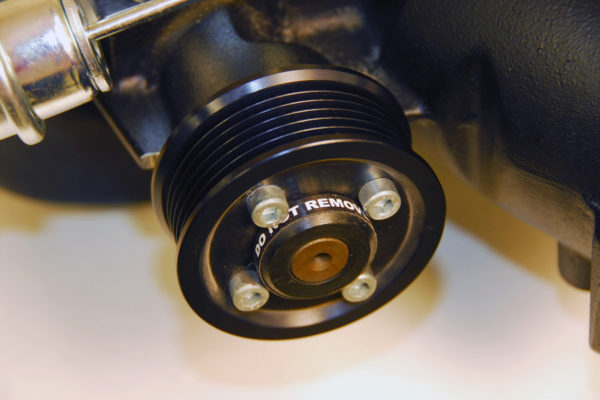
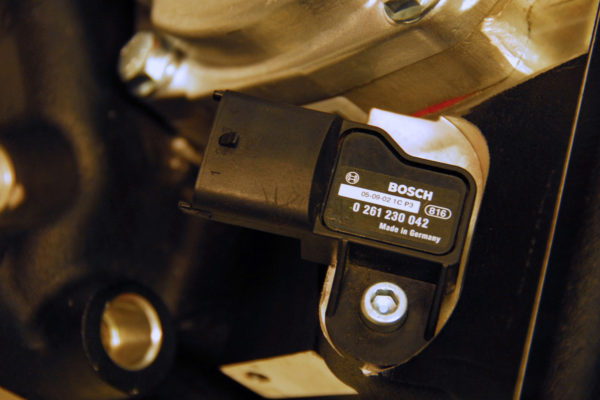
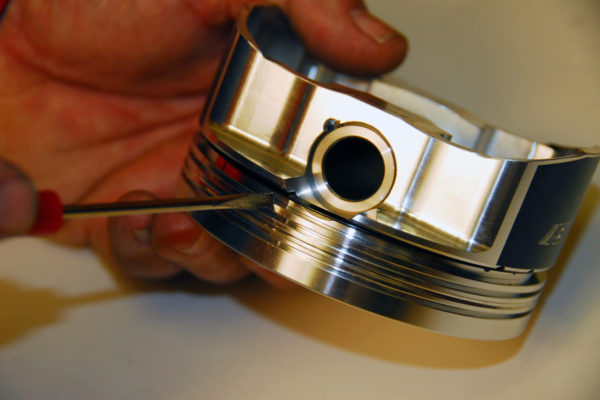
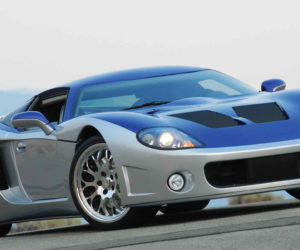
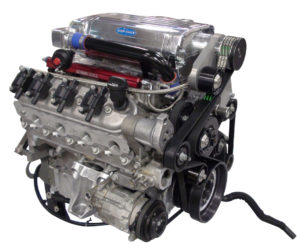
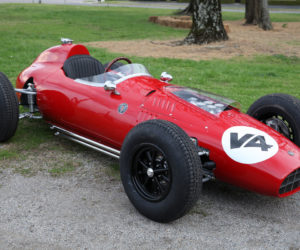
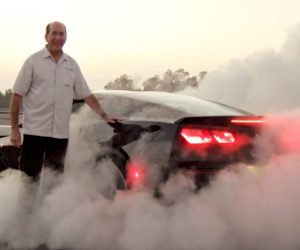
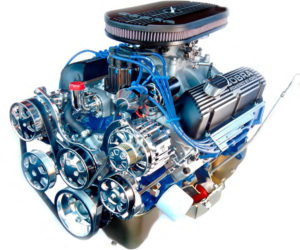
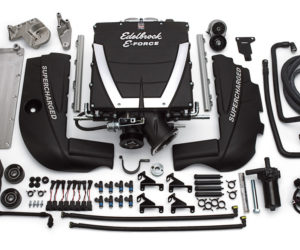




Comments for: FULL GALLOP
comments powered by Disqus